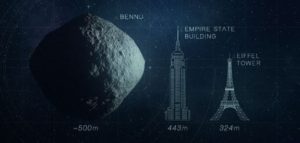While visiting one of my favorite Facebook groups, Space Opera, I came across an interesting topic. Someone had posted a photo of an asteroid named Bennu and a claim that it was “expected” to strike the Earth in 2135. That sort of thing always peaks my interest, so I checked it out on Space.com. No big surprise, the claim was bogus. “Expected” turned out to be about a 1 in 1265 chance, and it isn’t due to make its pass until “late” 22nd century. Sounds like pretty unlikely odds to me. Not to mention that would give us plenty of time to do something about it if it was on a collision course.

For those of us who write in the realm of science fiction, science FACTS are important. Of course, we have the advantage of suspension of disbelief, and I for one, play heavily on things that are currently hypothesized, but not yet known. Nonetheless, one thing that bothers me in science fiction is when a known fact is ignored or stretched beyond belief. There is plenty of room for us to imagine in the realm of the unknown, without ignoring what is already known as fact.
My favorite was a line I caught in an old Star Trek rerun. Dr. McCoy and Kirk were on a previously undiscovered planet, and McCoy was scanning for life signs. They are standing in front of a bush, and McCoy’s scanner picks up something several meters away. He says something like, “It’s the only sign of biological life around.” Really? Is there a form of life that isn’t biological? And what is the bush they’re standing in front of? Maybe it’s one of those non-biological forms of life. Or maybe, it’s a stage prop, and it isn’t a form of life at all.
